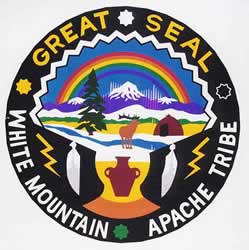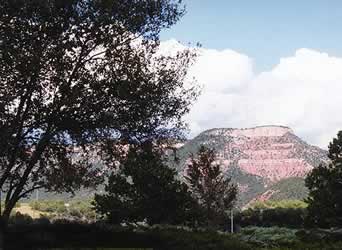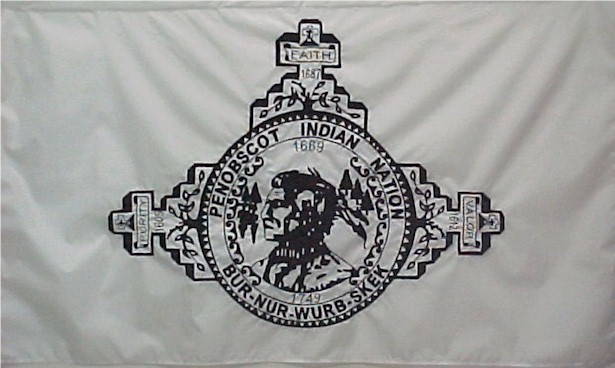| Jan. 25, 1856: |
The second half of the QUINAULT
and QUILEUTE treaty will be signed at Olympia, Washington today. The
first half was signed on July 1, 1855.
|
|
| Jan. 26, 1716: |
CHEROKEE Chief Caesar has told the English
in South Carolina that he would never fight them. He also told the Europeans
that they had nothing to fear from the CREEKs, because they wanted peace,
too. He offered to arrange for leading CREEKs to go to Charles Town
to arrange a peace. Today, 16 CREEK and YAMASSEE representatives arrive
at the CHEROKEE village of Tugaloo in northeastern Georgia. The CREEKs
and the YAMASSEE know of the CHEROKEE's desire to remain neutral, or
at peace. Rather than talking about peace, the representatives urge
the CHEROKEEs to join them in their plan to attack the South Carolina
settlements. This so angers the CHEROKEEs, that the representatives
are killed.
|
|
| Jan. 27, 1814: |
Today, in modern day Macon
County Alabama, American forces of almost 1,000 militia and Indians
will be camped on Callabee Creek near the scene of the battle of Autossee,
last November. Red Stick CREEKs will attack their encampment. The Georgia
militia and the "friendly" Indians will have 22 killed and
almost 150 wounded. The Red Sticks will suffer as well, but they will
force the American expedition to leave the area.
|
|
|

John
Ross
|
| Jan. 28, 1833: |
Today, a CHEROKEE commission
of John Ross, John Baldridge, Richard Taylor, and Joseph Vann, address
the Secretary of War in Washington, D.C.. They again state their unwillingness
to negotiate with the federal government about removal, while the federal
government is not living up to its previous agreements to protect them
from the illegal actions of the State of Georgia. The CHEROKEEs are told
their only hope is for removal. During subsequent discussions, President
Jackson offers the eastern CHEROKEEs 3 million dollars for all of the
lands east of the Mississippi River, excluding North Carolina. John Ross
asks the President how he will be able to protect the CHEROKEEs in Indian
Territory, if he cannot protect them from Georgia. The commission feels
that the gold mines on CHEROKEE lands are worth more than the President's
offer.
|
|
| Jan. 29, 1675: |
Today, John Sassamon will be found under the ice of Assawompsett Pond,
15 miles from the Plymouth. A Christian Indian, and educated at Harvard,
Sassamon had recently left living with the whites to become Philip's aide.
He would the leave Philip, return to the colony as a preacher for the
local Indians. He would tell the colony of Philip's plans to attack, but
he would not be believed. After his body was found, witnesses would testify
in court that 3 WAMPANOAGs murdered Sassamon. Some time later, 1 of the
3 would confess on the gallows, after his rope broke while being hanged.
He would be hanged anyway. This episode, was the spark Philip needed for
his war.
|
|
| Jan. 30, 1838: |
SEMINOLE Chief Osceola dies today at Fort Moultrie, in Charleston,
South Carolina. It is believe he has some sort of throat disease, others
will say malaria, other say of a broken heart.
|
|
|
 
Great Seal of the
White Mountain Apache Tribe. and The White Mountain
|
| Jan. 31, 1870: |
The first acts are taken to establish the White Mountain-San Carlos-Camp
Apache Reserve in western Arizona territory, by the Military Division
of the Pacific. Major engineer H.M.Robert forwards a map of the proposed
reserve to military headquarters in San Francisco for consideration.
|
|
| Feb. 1, 1917: |
By Executive Order, today,
the PAPAGO Indian Reservation in established in Arizona. The act will
be amended on February 21, 1931, and on October 28, 1932.
|
|
| Feb. 2, 1887: |
A
law is passed which will prohibit the use of Indian languages in schools.
|
|
| Feb. 3, 1847: |
General
Sterling Price reaches the fortified TAOS Pueblo. Cannonade proves unfruitful,
so Price retreats to the city of Taos.
|
|
| Feb. 4, 1861: |
John
Ward's step-son Feliz Tellez is kidnapped by Indians from his rancho
on Sonoita Creek in Arizona. Ward complains to the army, and they send
Second Lt.George Bascom, and 54 soldiers to find him. Today, CHIRICAHUA
APACHE Chief Cochise is invited to talk with Bascom in Apache Pass,
in southwestern Arizona. Cochise brings some family with him to the
parlay in Bascom's tent. Cochise is shocked when Bascom accuses him
of kidnapping the boy. Cochise denies his involvement, but Bascom does
not believe him. Bascom then tells Cochise he is under arrest. Cochise
cuts a hole in the tent, and escapes. Bascom will keep Cochise's relatives
as hostages. Cochise will quickly seize several whites has hostages,
as well.
|
|

Penobscot Indian
Flag
|
|
Feb. 5, 1802:
|
Orono was a PENOBSCOT Chief.
During his life he was converted to catholicism, he fought in the French
and Indian wars against the British settlements in New England, he fought
on the American side during the Revolutionary War, and he is believed
to have been 108 years old when he died on this date.
|
|
|
Feb. 6, 1854:
|
The
State of Texas passes a law, today, which allows the United States to
pick sites for 2 Indian reservations in Texas. One will be on the main
fork of the Brazos River. The other, will be on the Clear Fork of the
Brazos River.
|
|
|
Feb. 7, 1983:
|
The
INUIT Circumpolar Conference is held at the United Nations.
|
|
|

|
|
|
|
|
    
|
|
    
|
|
|
|
| |

|
|
| |
Canku Ota is a free Newsletter celebrating Native America,
its traditions and accomplishments . We do not provide subscriber or visitor
names to anyone. Some articles presented in Canku Ota may contain copyright
material. We have received appropriate permissions for republishing any
articles. Material appearing here is distributed without profit or monetary
gain to those who have expressed an interest. This is in accordance with
Title 17 U.S.C. section 107. |
|
|
|
|
| |
Canku Ota is a copyright ©
2000, 2001, 2002, 2003 of Vicki Lockard and Paul
Barry.
|
|
|

|
|

|
|
The "Canku Ota -
A Newsletter Celebrating Native America" web site and its design
is the
|
|
Copyright © 1999,
2000, 2001, 2002, 2003 of Paul C. Barry.
|
|
All Rights Reserved.
|




